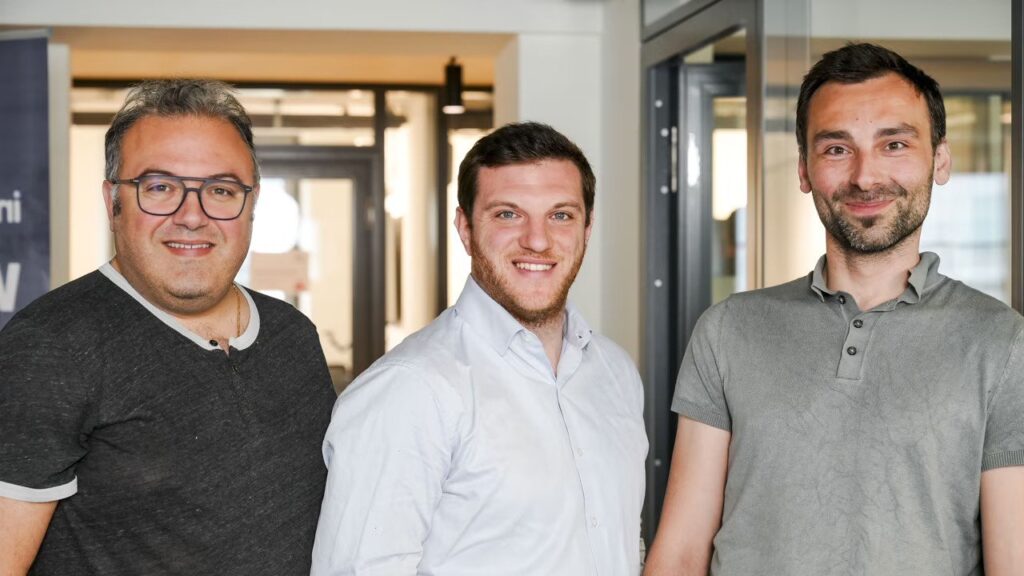Optical interposer company NcodiN has raised €3.5 million from Elaia, Earlybird Venture Capital and OVNI Capital.
NcodiN has developed an optical interposer that enables high-bandwidth, low-latency optical data communication between chiplets within a processor package.
The on-chip integration of ultra-small nanolasers and nanodetectors allows for ultra-high integration density of over 10,000 components per cm2.
The company's optoelectronic components are the result of more than 15 years of research at the CNRS Center for Nanosciences and Nanotechnology near Paris, one of Europe's leading academic centers in the field of nanophotonics.
To find out more, we spoke to Francesco Manegatti, co-founder and CEO of NcodiN.
Why is this important?
The technology will enable adopters to achieve fast, reliable and energy-efficient data transmission, enabling them to scale high-end processor architectures dedicated to the heaviest supercomputing workloads.
This enables processor performance to scale to meet the needs of high-performance computing (HPC) and AI, and thus the evolving needs of scalers such as Nvidia, Intel and Qualcomm, without the limitations of traditional electrical interconnects.
The power of nanolasers and nanodetectors
NcodiN's optical interposer technology uses integrated semiconductor nanolasers to optically transmit data between chiplets.
This offers several advantages over traditional electrical data transmission methods:
Fiber optics has a much higher data transmission capacity than copper interconnects. Light signals in fiber optics can reach longer distances and have higher data rates compared to copper wires, where signal integrity degrades rapidly at high frequencies. The nanolasers used in NcodiN's interposers consume significantly less power than traditional electrical interconnects, contributing to more energy-efficient system designs. Fiber optic cables are thinner and lighter than copper wires, enabling higher density interconnects. NcodiN's technology paves the way for petabit/second data traffic with a power budget of less than 100 fJ/bit.
Accelerators bring connections and early funding
Since its launch in March 2023, NcodiN has been supported by a renowned incubator (Agoranov) and three accelerators (21st by CentraleSupélec, Wilco, and Intel Ignite).
Manegatti said those programs helped it penetrate the French tech ecosystem, and financial support with a zero-interest loan allowed the startup to start paying its first expenses and pay its first employees last September. The company has since grown to seven people.
The company is currently focused on structuring its team and company while continuing its research and development.
“It’s about having the technology ready to be commercialized when needed. In our discussions with customers we realised the timing is perfect as industrialisation takes a long time,” Manegatti explains.
I’m sure I’m not the only one wondering how a new startup can attract the interest of large, established companies like Qualcomm and Nvidia.
Manegatti said it's a long journey, but
“If your customers are large corporations, I don’t think you need to start with the mid-size or small businesses in the market.
“And right from the get-go, it's good to approach them and understand their requirements and know how they are used to working with startups. And we did that. So, we got the opportunity to build a pretty good network.”
From the very beginning, we felt there was real interest in our technology and especially in our value proposition.”
NcodiN's commercial journey is still in its early stages: the company has several steps to take towards industrialization, including demonstrating performance demonstrations, replicating them, and employing them within microlabs, which it expects to take around five years to get to market.
Regarding the phasing out of copper in favor of optical lasers, Manegatti elaborated:
“This will be a hybrid approach, employing very short interconnects based on copper and longer interconnects based on lightweight optical lenses.”
Manegatti explains that the company has “demonstrated that this can not only be done in a beautiful cleanroom in a lab, but also that it can be exported and replicated on 300-millimeter wafers in a CMOS foundry with minimal capital investment.”
“Now, as we're dealing with more and more advanced nodes, it's becoming more and more expensive to build manufacturing facilities. So the costs are increasing exponentially.”
That's why the company is keen to partner with manufacturing plants rather than compete with manufacturers.
Visionary investment
NcodiN has been fortunate to catch the attention of major manufacturers and prominent European investors, and when asked about the keys to raising funds in the current climate, Manegatti advises startups to “take the time to get your value proposition right, especially selling your vision.”
“And if I were to talk to entrepreneurs about starting the fundraising process, I would advise them to give themselves plenty of time because you never know how long it's going to take.”
Clément Vanden Driessche, Investment Director at Elaia, said: “We are delighted to be partnering with Elaia in this exciting new venture.
“Francesco, Bruno, Fabrice and the NcodiN team saw a unique opportunity to transform the semiconductor industry with a new approach to photonic links.”
“We are thrilled to be working with such a pioneering research team to develop a new drug that will help treat patients with HIV and AIDS,” said Dr. Frédéric du Bois-Raymond, partner at Earlybird-X.
“We are convinced by their fantastic research and excited about the commercial possibilities it creates. The future looks bright!”
The latest funding round will be focused on accelerating the development of NcodiN's integrated optical link prototype (MVP) as well as fueling the company's expansion and enabling rapid growth to address the needs of industrial customers.
Main image: NcodiN Founder. Photo: Uncredited.



